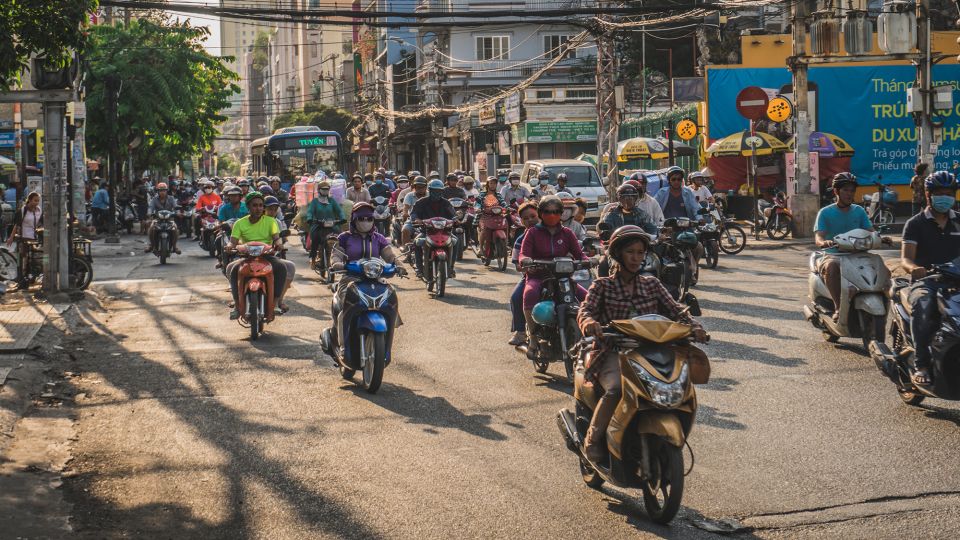Ho Chi Minh City, formerly known as Saigon, pulses with energy and activity, blending modern chaos with a deep-rooted respect for tradition. As motorcycles zip through bustling streets and street vendors call out their wares, the city presents a vivid tableau of life in post-conflict Vietnam. Despite the frenetic pace and overwhelming sensory experiences, the essence of Saigon’s historical significance is palpable for those willing to engage with its complex narrative. The words of Graham Greene, the author of “The Quiet American,” resonate in this context – a reminder that understanding Vietnam’s rich tapestry requires more than mere observation; it demands immersion in the cultural and historical intricacies that define the city.
Upon arriving, visitors quickly realize that Saigon is not merely a remnant of Vietnam’s past but a living entity that is evolving rapidly. The city’s name may have changed, but many locals still refer to it as Saigon, and the spirit of this name is kept alive in various facets of daily life—like the Saigon River and local beverages. A knowledgeable guide named Po introduces newcomers to the city’s notorious traffic, dominated by an astonishing 7.3 million motorcycles. This mode of transportation is emblematic of the city’s character and serves as a testament to its resilience, ingenuity, and communal spirit. The local way of moving through traffic entails a practiced routine, and navigating this chaos reveals an intricate system that exists amidst apparent disorder.
Experiencing Ho Chi Minh City from the back of a motorbike is not just practical; it offers a window into the everyday dynamics that define the urban landscape. A stop at a traditional curbside barber underscores the relationship between past and present in the city’s fabric. For just a dollar, one can enjoy a shave or haircut while observing the world pass by, a simple yet powerful ritual that connects patrons to generations of local tradition. The vibrant surroundings echo the rhythms of life, and reflective moments reveal a beauty within the cacophony—a reassurance that amid the hustle, tranquility can still be found.
Cultural institutions like the Saigon Opera House embody this blending of history and modernity. Originally built by the French colonial powers, the opera house serves as a venue for showcasing Vietnamese culture through performances such as The Bamboo Circus, a creative artistic expression highlighting the importance of bamboo—a symbol of strength and flexibility in Vietnamese life. This production transports audiences through a range of scenes depicting everyday life in the city, illustrating the juxtaposition of tradition and contemporary storytelling. The show celebrates the hard work and spirit of the Vietnamese people, offering a sense of pride and joy while capturing the complexities of modern Vietnamese identity.
Water puppetry emerges as another potent manifestation of Vietnam’s rich artistic traditions. Once a form of royal entertainment, it utilizes the ancient art of storytelling through intricately carved puppets maneuvered by skilled artisans performing in waist-deep water. This cultural revival emphasizes the importance of preserving heritage even as the country marches forward, highlighting the values of resilience and artistry that run deep in the fabric of Ho Chi Minh City’s identity. Amidst the hustle and bustle, this commitment to safeguarding its cultural narrative stands strong, indicating that the past remains deeply intertwined with the aspirations of the future.
As visitors venture deeper into the heart of Ho Chi Minh City, traditional experiences continue to unfold, such as sampling weasel coffee—a uniquely Vietnamese delicacy. This elaborate method of coffee production connects centuries of tradition to the modern coffee culture in Vietnam, revealing the country’s standing as the world’s second-largest coffee exporter. Exploring alleyways and markets unveils further treasures of history, from remnants of the Vietnam War to simple, childlike joys of flying kites, weaving a narrative that resonates with generations. This city, with its blend of chaos and tradition, speaks to the resilience and tenacity of its inhabitants, fostering an appreciation for simplicity and beauty in everyday life—a timeless dance between the past and present continuously reshaping its identity.

